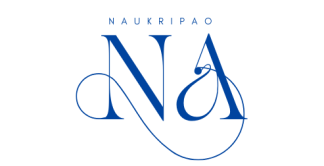
How to Start a Speech: Tips and Tricks for a Powerful Opening
Starting a speech can be one of the most challenging aspects of public speaking. Those first few moments are crucial in capturing your audience’s attention and setting the tone for your entire presentation. Whether you’re a student, professional, or anyone looking to improve their public speaking skills, mastering the art of how to start a speech is essential. In this comprehensive guide, we’ll explore various techniques, tips, and tricks to help you craft compelling openings that will engage your audience from the very beginning.
Why the Opening Matters
The opening of your speech is critical because it:
- Grabs the audience’s attention
- Sets the tone for your entire presentation
- Establishes your credibility
- Gives the audience a reason to listen
A strong start can make the difference between an engaged audience and one that tunes out before you’ve even begun. Let’s dive into some effective strategies for starting your speech with impact.
1. Tell a Personal Story
One of the most powerful ways to start a speech is by sharing a personal anecdote. Stories have a unique ability to connect with people on an emotional level, making your message more relatable and memorable.
Tips for using personal stories:
- Keep it relevant to your topic
- Make it concise and engaging
- Use vivid details to paint a picture
- Practice your delivery to ensure smooth narration
Example: “Last summer, I found myself stranded on a remote island with nothing but a backpack and a broken compass. Little did I know, this experience would teach me more about leadership than any business book ever could…”
2. Ask a Thought-Provoking Question
Starting with a question immediately engages your audience by encouraging them to think and participate mentally in your presentation.
Types of questions to consider:
- Rhetorical questions
- “What if” scenarios
- Surprising statistics framed as questions
Example: “What if I told you that 90% of the decisions you make every day are influenced by factors you’re not even aware of? How would that change the way you approach your daily life?”
3. Use a Powerful Quote
Quoting a well-known figure or expert in your field can lend credibility to your speech and provide a springboard for your main points.
Guidelines for using quotes:
- Choose a quote that’s directly relevant to your topic
- Attribute the quote correctly
- Explain why the quote is significant to your message
Example: “Albert Einstein once said, ‘Imagination is more important than knowledge.’ Today, I’m going to show you how this principle can revolutionize your approach to problem-solving in the workplace.”
4. Start with a Surprising Statistic
Statistics can be a powerful tool to grab attention, especially if they challenge common assumptions or reveal something unexpected about your topic.
Tips for using statistics:
- Make sure your statistic is accurate and from a reliable source
- Put the statistic in context
- Explain why the statistic matters to your audience
Example: “Did you know that the average person spends 5 years and 4 months of their life on social media? That’s more time than most people spend eating and drinking combined. Today, we’re going to explore how we can reclaim that time and use it more productively.”
5. Create a “What If” Scenario
Inviting your audience to imagine a hypothetical situation can be an engaging way to introduce your topic and get them thinking creatively.
How to craft an effective “What If” scenario:
- Make it relevant to your audience’s experiences or interests
- Keep it concise and easy to understand
- Use vivid language to help your audience visualize the scenario
Example: “What if you woke up tomorrow and every digital device had disappeared? No smartphones, no computers, no smart TVs. How would your life change? How would you communicate, work, or entertain yourself? This scenario might seem far-fetched, but it’s not too different from what many people experienced just a few decades ago…”
6. Use Humor (Carefully)
Starting with a joke or humorous anecdote can help break the ice and create a positive atmosphere. However, humor should be used cautiously, especially in more formal settings.
Guidelines for using humor:
- Ensure the joke is appropriate for your audience and setting
- Practice your delivery to nail the timing
- Have a backup plan in case the humor falls flat
Example: “I was going to start this speech with a joke about procrastination, but I’ll do it later. Instead, let’s talk about how to actually get things done…”
7. Make a Bold Statement
A strong, assertive statement can immediately capture attention and set the tone for a powerful speech.
Tips for making bold statements:
- Be confident in your delivery
- Ensure you can back up your statement with evidence or reasoning
- Use this technique sparingly for maximum impact
Example: “In the next 30 minutes, I’m going to show you how to double your productivity while working half as many hours. Sound impossible? Let me prove you wrong.”
8. Start with Silence
Sometimes, the most powerful way to start a speech is with a moment of silence. This unexpected pause can draw your audience’s attention and create anticipation for what you’re about to say.
How to use silence effectively:
- Stand confidently and make eye contact with your audience
- Hold the silence for a few seconds longer than feels comfortable
- Follow the silence with a powerful opening line
Example: (Stand silently for 5-10 seconds, making eye contact with various audience members) “That feeling of discomfort you just experienced? That’s exactly how millions of people feel every day when faced with public speaking…”
Tips for Starting a Speech in English
For non-native speakers or those new to public speaking in English, starting a speech can feel particularly daunting. Here are some additional tips:
- Practice your opening extensively: Rehearse your introduction multiple times to build confidence and fluency.
- Use simple, clear language: Avoid complex vocabulary or idioms that might trip you up.
- Focus on pronunciation: Pay special attention to pronouncing key words in your opening correctly.
- Start with a greeting: A simple “Good morning/afternoon/evening” can help you ease into your speech.
- Memorize your first few sentences: Knowing your opening by heart can help you start strong, even if nerves kick in.
How to Start a Speech of Introduction
When introducing someone else, your opening should be brief, informative, and create anticipation for the main speaker. Here’s a structure you can follow:
- Greet the audience
- Introduce yourself briefly
- Explain your connection to the speaker
- Share a brief, relevant anecdote or achievement about the speaker
- State the speaker’s name and topic
Example: “Good evening, everyone. I’m Jane Smith, the head of marketing here at XYZ Corp. It’s my pleasure to introduce our keynote speaker tonight. I’ve had the privilege of working with her on several groundbreaking projects, and I can tell you firsthand that her innovative approach to problem-solving has revolutionized our industry. Without further ado, please join me in welcoming Dr. Sarah Johnson, who will be speaking to us about ‘The Future of Artificial Intelligence in Marketing.'”
How to Start a Speech for Students
For students giving presentations or speeches in class, here are some tailored tips:
- Relate to your classmates: Use examples or scenarios that your peers can easily understand and connect with.
- Show enthusiasm: Your energy can be contagious, so start with passion for your topic.
- Use visual aids: If allowed, start with an interesting image or prop that relates to your topic.
- Ask for participation: Engage your classmates from the start with a show of hands or a quick poll.
- Start with a fun fact: Choose something surprising or interesting related to your topic to pique curiosity.
Example: “Raise your hand if you’ve ever forgotten to do your homework. (Pause for response) Now, imagine if you could complete all your assignments in half the time, with better results. Today, I’m going to share five study techniques that will revolutionize how you approach your schoolwork.”
Conclusion
Starting a speech effectively is an art that combines creativity, understanding of your audience, and confident delivery. By using these tips and techniques, you can craft openings that captivate your listeners from the very first word. Remember, the key to a great speech start is to practice, be authentic, and tailor your approach to your specific audience and topic. Whether you’re a student, professional, or occasional public speaker, mastering how to start a speech will set you up for success in all your presentations.
As you prepare for your next speech, experiment with different opening techniques to find what works best for you and your message. With practice and these strategies in your toolkit, you’ll be well on your way to delivering powerful, engaging speeches that leave a lasting impact on your audience.
